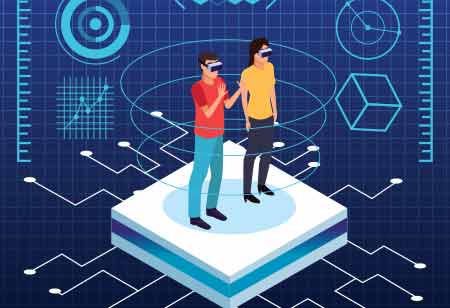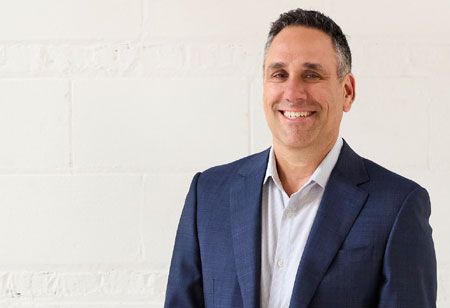THANK YOU FOR SUBSCRIBING

Revenue Cycle Management in the Australian Healthcare System
Sayeed Zia, Director Finance and Corporate Services at Sydney Children's Hospitals

 Sayeed Zia, Director Finance and Corporate Services at Sydney Children's Hospitals
Sayeed Zia, Director Finance and Corporate Services at Sydney Children's HospitalsRevenue cycle management (RCM) is an integral part of the Australian Health system, as it involves the process of tracking and managing the financial interactions between patients, providers, hospitals and payers. This includes everything from the initial patient encounter and appointment scheduling to billing and payment collection. In order to be successful, RCM requires a well-organized and efficient system that can handle the complex and constantly changing nature of the healthcare industry.
Referral Management
One of the key components of RCM is the referral process, which involves the transfer of patients from one healthcare provider to another. The Australian healthcare system often includes referrals from private health networks and general practitioners (GPs) to public hospitals and other healthcare facilities. These referrals are important for several reasons.
First and foremost, consistent referrals help to ensure that patients receive the necessary care and treatment on time. This is particularly important for patients with chronic conditions or complex medical needs, who may require ongoing care from multiple providers. Without a smooth and efficient referral process, these patients may struggle to access the care they need, leading to unnecessary delays and potential complications.
In addition to the clinical benefits, consistent referrals are also important financially. Public hospitals in Australia rely heavily on funding from Medicare and private health insurance to cover the costs of patient care. When private health networks and GPs refer patients, it helps to ensure that the hospital will be properly reimbursed for the services provided. This is critical for the financial stability of the hospital and the overall healthcare system.
Partnership between revenue management and clinicians
For effective managementof the RCM process, revenue management administrators need to have a strong partnership and good relationship with frontline clinicians. This includes doctors, nurses, and other healthcare professionals who are directly involved in the care of patients.
There are several reasons why this partnership is important. First, clinicians are the ones most familiar with the specific needs and treatment plans of individual patients. They can provide valuable insights and information to help revenue management administrators accurately bill for the services provided.
Additionally, a good relationship between revenue management and clinicians can help to facilitate better communication and collaboration throughout the hospital. This can lead to increased efficiency and better patient outcomes, as everyone is working towards the same goal of providing high-quality care.
Data Systems and Processes
In order to successfully manage the RCM process, it is essential to have systems in place that ensure the accuracy and ease of data capture. This includes everything from appointment scheduling and patient registration to billing and payment collection.
One way to improve the accuracy and efficiency of data capture is by implementing electronic medical records (EMR) systems. These systems allow healthcare providers to easily store and access patient information, including medical history, test results, and treatment plans. This can help to reduce errors and improve the overall quality of care.
Another important factor is the use of standardized coding systems, such as the International Classification of Diseases (ICD) and the Current Procedural Terminology (CPT). These systems allow healthcare providers to accurately and consistently describe the services provided to patients, which is critical for billing and reimbursement purposes.
Innovations in Revenue Cycle Management
Innovation in revenue cycle management (RCM) is a rapidly growing area, as healthcare providers seek new and more efficient ways to track and manage the financial interactions between patients, providers, and payers. Some of the most promising innovations in this field include machine learning, artificial intelligence, and digital twins.
Machine learning is a type of artificial intelligence that uses algorithms to automatically improve the performance of a system over time, without explicit programming. In the context of RCM, machine learning can be used to analyse data on patient demographics, diagnoses, and treatment plans, in order to identify patterns and trends that can inform billing and payment decisions. For example, a machine learning algorithm might be able to predict the likelihood of a patient being discharged within a certain time frame, based on their medical history and current condition. This information could be used to better forecast revenue and optimise staffing levels.
Artificial intelligence (AI) is a broader term that refers to the use of computers to perform tasks that normally require human intelligence, such as decision making and problem solving. In the context of RCM, AI can automate and streamline various processes, such as appointment scheduling, patient registration, and billing. For example, an AI system can automatically schedule appointments based on availability and patient preference or flag errors or inconsistencies in billing records.
Digital twins are virtual representations of physical systems or processes that can be used to simulate and optimize their performance. In the context of RCM, a digital twin might be used to simulate the flow of patients through a hospital or clinic to identify bottlenecks or inefficiencies in the process. This information could then be used to change the physical system to improve performance and efficiency.
Overall, these innovative technologies have the potential to greatly improve the efficiency and effectiveness of RCM by capturing revenue opportunities that may have been missed using traditional methods. By leveraging the power of machine learning, AI, and digital twins, healthcare providers can better serve the needs of their patients and improve the financial health of their organizations.
Conclusion
Effective revenue cycle management is crucial for the financial stability and success of the healthcare industry, and it requires a well-organized system that can handle the field's complex and constantly changing nature. By focusing on key areas such as consistent referrals, partnerships and good relationships with clinicians, and accurate data capture, healthcare providers can greatly improve the efficiency and effectiveness of their RCM process. Additionally, the adoption of innovative technologies like machine learning, artificial intelligence, and digital twins has the potential to revolutionize the way RCM is approached, unlocking new revenue opportunities and ultimately leading to better patient care and improved financial outcomes for healthcare organizations. By embracing these strategies and technologies, healthcare providers can not only improve their own financial health, but also make a meaningful impact on the health and well-being of their patients and the wider community.
Read Also








-450x308_tK8s.jpg)














ON THE DECK